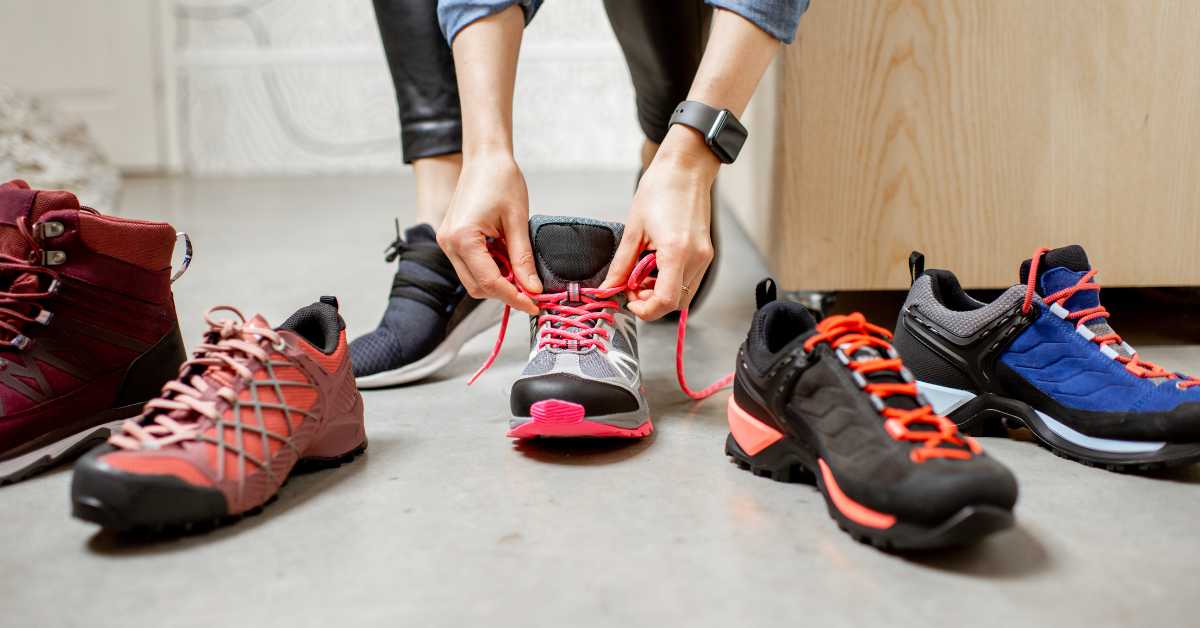I don’t know what happened, but one day, none of my shoes fit anymore. Was it that nothing felt good after too much time in Birkenstocks? Or did a pair of shoes irritate my latent bunion? It doesn’t really matter. I had to find comfortable shoes, especially for situations where my Arizona’s don’t work – like hiking. The process took much longer than I hoped, but it was worth the wait.
I’ll walk you through the nine different trail running shoes I tried on, the few that I bought but returned, and the ultimate winner. I did consider hiking sandals, but this happened in the fall. I will revisit that category when the weather warms up.
Just because eight of these shoes didn’t work for my very picky feet doesn’t mean they won’t work for you. There was something I liked about each of these shoes, they just didn’t fit. Many of the shoes already have updated versions are also worth taking a look at.
Keep scrolling for 7 tips on finding comfortable trail runners for wide feet.
5 Trail Runners I Tried On
3 Trail Runners I Returned
The Trail Running Shoes I Kept
The 5 Trail Runners I Tried On
Hoka Speedgoat 5
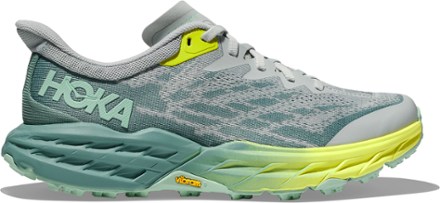
The Speedgoat is one of the most popular trail runners out there for a reason. I was very close to buying them, but both the size 10 and 10.5 felt tight while I was trying them on. They might have been okay with some breaking in, but I wasn’t going to buy another pair of shoes that didn’t quite fit.
I will say that I’m impressed how Hoka’s have begun to look good and I’ll definitely be giving them another chance in the future.
Altra Timp 4 (now Timp 5)
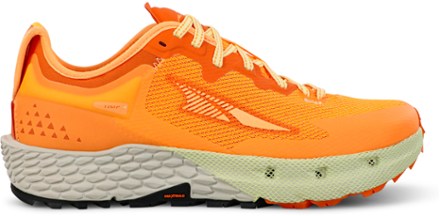
I have learned to buy any shoe that feels comfortable right away. The cushion felt amazing, even with the zero-drop sole. It was suggested that the sole may not last long in my local rocky conditions. I ended up buying this shoe for workouts and daily life.
Altra has since released the Timp 5. I tried them on but felt a tightness at the inside of the foot where I need width.
Altra Outroad 2
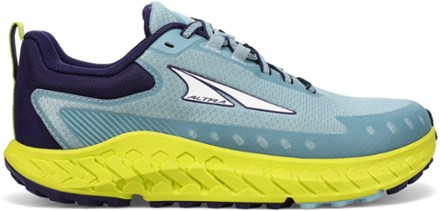
The Outroads were a good fit but didn’t have as much cushion as I was looking for. Kudos to Altra for making shoes that fit. You just have to find the right one for you.
Topo Athletic MTN Racer 3 (Men’s)

Wearing men’s shoes can be a “hack” for women with wide feet, but it doesn’t always work. The toe box was too wide toward the outside/pinky toe but not wide enough where I need it (at the base of the big toe). I would have tried the women’s version, but my size wasn’t available in the store.
Brooks Catamount 2 (now 3)
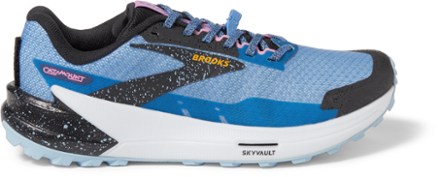
The Catamount cushion felt right, but the shoe felt tighter than the Cascadia. There is not a wide version.
Here’s another review of the Brook Catamounts.
The 3 Trail Runners I Bought + Returned
Salomon X Ultra 4 Low Hiking Shoes
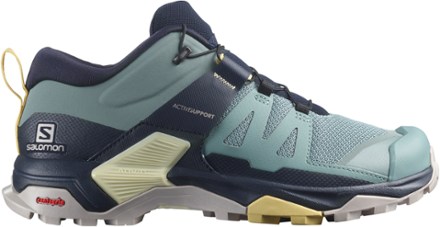
Even though Salomons look narrow, they have a wider toe box than most shoes, even in the regular size. I had to size down for a better fit.
I do like the quick lacing system and how it makes it easy to adjust the tightness at different parts of the shoe.
After trying on all the shoes I mentioned above, the X Ultra 4s felt great at first. But the more I wore them, the less I liked them. The outsole did perform very well but I prefer more cushion in a shoe.
The fit just didn’t work for my foot. Somehow, they felt both too big and too small at the same time. My foot had too much space, while my toes were too close to the front of the shoe. I tried different insoles and socks, but nothing helped, so back they went.
Check out this review for another impression of the X Ultra 4s.
Brooks Cascadia 17 – Wide
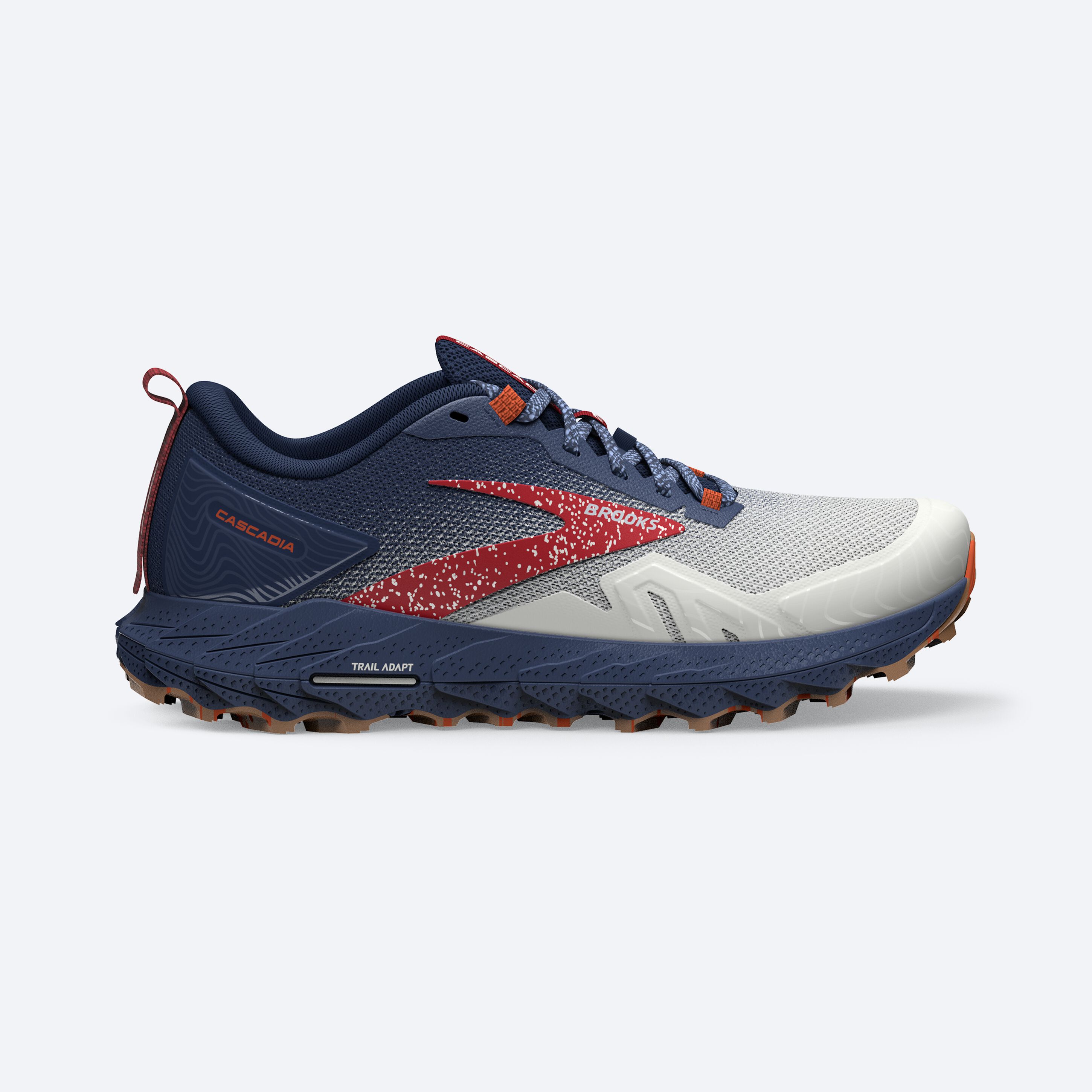
I logged at least 50 miles in these shoes before returning them. At first, I was delighted with the roomy toe box and thick cushion.
However, repeated wear really irritated the bunion area. The fit didn’t improve with wear, so I returned them. I ordered the wide version directly from Brooks and made use of their 30-day return window.
The lesson from this is that extra width is not enough. The width has to be in the right place for your foot shape.
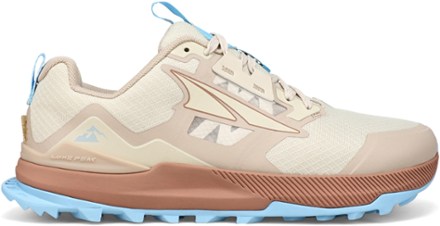
Altra Lone Peak 7 – Wide (Now 8)
I never thought I would say this about a shoe, but it was too wide. Try Altra’s regular sizing first, even with a wide foot.
The Winner!
Saucony Endorphin Edge
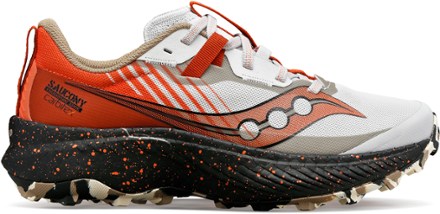
The search for a trail runner that fit my wide feet ended here. They fit and felt comfortable while walking up and down REI’s steep rock. The sole had the plush cushioning I like, as well as a durable outsole. That’s all I was looking for.
As always, I wore the shoe around the house with a couple of different socks before heading outside. It took a few hikes to dial in the best sock and lacing tightness, but I enjoy the shoes more every time I wear them.
Read my full review here.
How To Find Trail Running Shoes For Wide Feet
Here is what I learned about finding shoes for wide feet from trying on these 9 different models and a lifetime of having wide feet.
1. Fit First: Are you wearing the right size?
Shoe size varies between brands and over time. The latter was relevant to me here. I had convinced myself that my feet had not changed after 40 and having a child. But shoes don’t lie.
I have always been a size 10, with the occasional 9.5, depending on the brand/shoe. The shoe that ultimately worked the best was 10.5. It’s a bit bigger visually than I would like but a happy foot is the most important thing.
2. How Much Space Should A Shoe Have?
More than you think.
There should be a thumb’s width of space between the end of your toe and the shoe edge. It seems like a lot, but feet aren’t always the same size. They swell with activity, like hiking, so a shoe that fits just right in the store could feel too tight on the trails.
It can help to shop later in the day after some walking to mimic those conditions. Extended try-ons around the house is a must as well. A shoe that feels good for 5 minutes may not after 20.
3. Where Is The Width?
Wide toe boxes and wide shoes aren’t all the same kind of wide. There are brands with wide toe boxes, like Altra, that are designed for the shape of feet. Some brands, like Brooks, offer wider versions of conventional shoes.
The extra width can be added at the inside of the foot, outside, or both. Keep looking into you find the match for your foot shape.
4. Try Different Insoles
Like clothing can be altered for a better bit and so can shoes, to a degree. For wide feet, an insole with a higher arch can support the foot to give a little extra room in the shoe. Getting the right foot position can help your gait, increase stamina, and minimize soreness. Even if a different insole doesn’t do all that, it can’t hurt.
Insoles can also add more cushion, or less, to customize the feeling of the shoe to your preference.
5. Try Different Hiking Socks
Trying out different hiking socks can also help. A thinner sock will leave more space for the foot. I like full-cushion socks and the snug fit they create. Try out thin, medium, and thick socks to see what feels best for your foot and shoe.
6. Ask For Help
All of the information on the Internet adds up to a fraction of all human knowledge and experience. There is no substitute for visiting a store and getting some expert help. The best shoe for me wasn’t even on my radar from reading various reviews and recommendations. Running shoe stores, in particular, specialize in helping people find comfortable footwear.
7. Wait
In the 4 months between looking for shoes and writing about them, three of the shoes have released new versions. Keep an eye on the latest versions to see if there is a wide version or updated fit that works for you.
